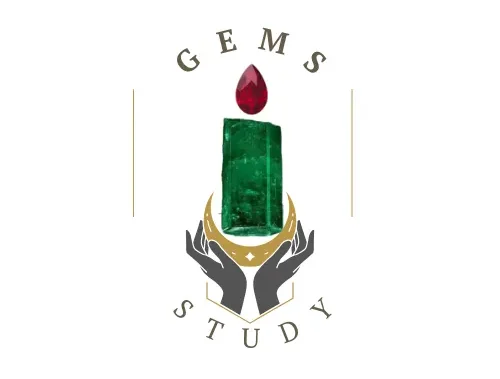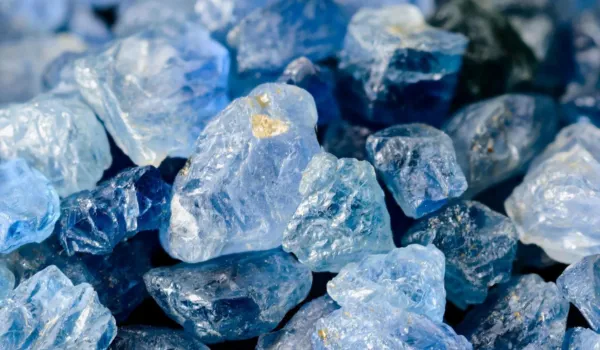Sapphire gemstones have mesmerized humankind for centuries. Their striking beauty, remarkable hardness, and legendary status make them one of the most sought-after gems on the planet. While the deep royal blue sapphire is the most famous, these gems come in an astonishing variety of colors, each with its own charm and significance.
In this comprehensive guide, we’ll take an in-depth journey into the fascinating world of sapphires. You’ll discover their origins, varieties, history, symbolism, and why they remain a favorite in fine jewelry and among gemstone collectors.
What Are Sapphire gemstones?
Sapphires are precious gemstones belonging to the corundum mineral family. Corundum is an aluminum oxide mineral, and sapphires rank 9 out of 10 on the Mohs scale of hardness, making them second only to diamonds in terms of durability.
The word “sapphire” originates from the Greek word sappheiros, likely referring to blue stones known in ancient times. Though traditionally associated with the color blue, sapphires come in a spectrum of hues, excluding red. (Red corundum is classified as ruby.)
The varying colors result from trace minerals:
- Iron and titanium create blue sapphires.
- Chromium gives pink or red hues.
- Vanadium causes the exotic purple and color-change varieties.

The History and Symbolism of Sapphire gemstones
Sapphire gemstones have an illustrious history steeped in legend, religion, and royalty.
- Ancient Persia believed the sky was painted blue by the reflection of giant sapphire stones.
- Medieval clergy wore blue sapphires to symbolize Heaven.
- Kings and rulers believed sapphires protected them from envy and harm.
Sapphires symbolize wisdom, loyalty, truth, and nobility. For centuries, they have been featured in royal regalia and engagement rings, symbolizing sincerity and faithfulness.
Why Sapphires Are So Popular
1. Durability
At 9 on the Mohs scale, sapphires are ideal for everyday wear. Their durability makes them a preferred gemstone for engagement rings and heirloom jewelry.
2. Color Variety
From royal blue to padparadscha orange-pink, sapphires offer diverse colors suitable for every style and taste.
3. Symbolism
Sapphires have represented purity, wisdom, and divine favor across cultures. Many people choose them for their rich symbolic meaning.
4. Investment Value
High-quality sapphires, particularly those from Kashmir, Burma, and Sri Lanka, have increased in value over time. They are highly prized by collectors.
Types of Sapphires gemstones and Their Colors
Sapphires are not just blue! Here’s a closer look at the wide variety of colors and types:
| Type | Primary Origins | Color Range |
|---|---|---|
| Blue Sapphire | Sri Lanka, Kashmir, Myanmar | Deep Blue, Royal Blue, Cornflower Blue |
| Padparadscha Sapphire | Sri Lanka | Pinkish-Orange, Lotus Blossom |
| Yellow Sapphire | Thailand, Sri Lanka | Light Yellow to Deep Golden |
| Pink Sapphire | Madagascar, Sri Lanka | Pale Pink to Hot Pink |
| Green Sapphire | Australia, Sri Lanka | Olive Green to Forest Green |
| Purple Sapphire | Tanzania | Lavender, Violet |
| White Sapphire | Sri Lanka | Colorless, Clear |
| Black Sapphire | Australia | Opaque Black |
| Orange Sapphire | Sri Lanka | Fiery Orange |
| Color-Change Sapphire | Tanzania | Blue to Purple (depending on light) |
| Star Sapphire | Myanmar, Sri Lanka | Blue, Pink, Gray with Asterism |
| Kashmir Sapphire | India (Kashmir) | Velvety Cornflower Blue |
The Legendary Blue Sapphire
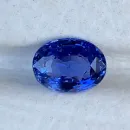
The blue sapphire remains the most iconic and desirable sapphire variety.
- Sri Lankan Blue Sapphires (Ceylon Sapphires) are prized for their light-to-medium tones and incredible clarity.
- Kashmir Sapphires, discovered in the 1880s, are renowned for their velvety appearance and rich cornflower blue color.
- Burmese Blue Sapphires, from Myanmar, are valued for their intense royal blue hue and exceptional quality.
Famous blue sapphires include Princess Diana’s (now Kate Middleton’s) sapphire engagement ring.
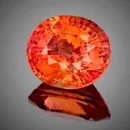
Padparadscha Sapphire: The Lotus Blossom Gem
The Padparadscha Sapphire is among the rarest and most treasured of all sapphires. Its unique color—a blend of pink and orange—resembles the color of a lotus flower at sunset.
- Mined mainly in Sri Lanka, high-quality padparadschas are extremely rare and command premium prices.
- Their delicate color balance makes them highly desirable for collectors and jewelry connoisseurs.
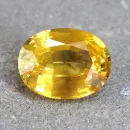
Yellow Sapphires: The Gem of Prosperity
The Yellow sapphires range from light lemon yellow to deep golden hues. They are often linked to wealth and wisdom in Vedic astrology.
- The finest yellow sapphires come from Thailand and Sri Lanka.
- They are frequently used in rings, pendants, and talismans for those seeking success and prosperity.
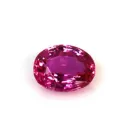
Pink Sapphires: A Symbol of Romance
The Pink sapphires are beloved for their romantic hue and are increasingly popular in engagement rings.
- Primarily sourced from Madagascar and Sri Lanka, they range from soft pastel pinks to vivid hot pink.
- These sapphires represent love, compassion, and feminine beauty.
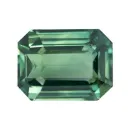
Green Sapphires: The Earthy Alternative
The Green sapphires, mostly mined in Australia, offer a more understated elegance compared to their emerald counterparts.
- Their hues range from moss green to olive and forest tones.
- Green sapphires are durable and affordable, making them a popular choice for unique jewelry designs.

Star Sapphires: Asterism in Action
|The Star sapphires exhibit asterism, a star-like effect that glides across the gem’s surface under direct light.
- Most commonly found in Myanmar and Sri Lanka, these gems are typically blue, pink, or gray.
- Star sapphires symbolize destiny and protection, often used as talismans.
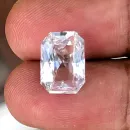
White Sapphires: The Diamond Alternative
The White sapphires are colorless and offer excellent brilliance, making them a cost-effective alternative to diamonds.
- Mostly sourced from Sri Lanka, they are popular in engagement rings and minimalist jewelry.
- While not as fiery as diamonds, their clarity and sparkle make them a timeless choice.

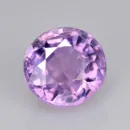
Purple and Black Sapphires: Bold and Unique
The Purple Sapphires from Tanzania showcase stunning violet and lavender hues.
- They symbolize creativity and spiritual enlightenment.
Black Sapphires, primarily from Australia, offer a bold, mysterious aesthetic perfect for men’s jewelry and modern designs.

Orange Sapphires and Color-Change Sapphires
- Orange Sapphires are rare and vibrant, exuding warmth and vitality.
- Color-Change Sapphires, mostly from Tanzania, shift from blue in daylight to purple under incandescent light. These gems are prized by collectors for their unique optical properties.
Kashmir Sapphires: The Crown Jewel
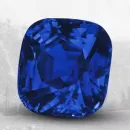
The Kashmir sapphires are legendary for their velvety texture and deep cornflower blue color.
- First discovered in the late 19th century in India’s Kashmir region, they are now extremely rare.
- These stones command record prices at auction and are considered some of the most valuable gemstones in the world.
The Value of Sapphire gemstones: What Determines Price?
Several factors influence the value of a sapphire gemstone:
- Color: Saturation, hue, and tone are key. Vivid, intense colors fetch higher prices.
- Clarity: Eye-clean stones are more valuable. However, some inclusions, like rutile needles, can create desirable phenomena like asterism.
- Cut: A well-executed cut enhances brilliance and color.
- Carat Weight: Larger stones are rarer and more expensive.
- Origin: Sapphires from Kashmir, Myanmar, and Sri Lanka are especially prized.
Treatments and Enhancements: What You Should Know

Most sapphires on the market undergo treatments to improve their color and clarity:
- Heat Treatment: Common and widely accepted, it enhances color and clarity.
- Diffusion Treatment: Adds color but only affects the stone’s surface. Less valuable than untreated stones.
- Fracture Filling: Fills surface cracks but reduces the stone’s overall durability and value.
Always ask for a gemological certificate from a reputable lab when buying sapphires.
Ethical Sourcing and Sustainability
Consumers today are increasingly concerned about ethical sourcing. Leading sapphire-producing countries like Sri Lanka and Australia have adopted ethical mining practices that protect the environment and local communities.
Buying ethically sourced sapphires ensures that your purchase supports responsible mining, fair labor practices, and environmental sustainability.
Famous Sapphires Throughout History
- Princess Diana’s Engagement Ring: Now worn by Kate Middleton, this iconic 12-carat oval blue sapphire is one of the most famous in modern history.
- The Logan Sapphire: A 423-carat Sri Lankan blue sapphire, one of the largest faceted sapphires in existence, housed at the Smithsonian Institution.
- Star of India: A 563-carat star sapphire, displayed at the American Museum of Natural History.
How to Care for Your Sapphire Jewelry
Sapphires are durable, but they still require proper care:
- Clean them using warm soapy water and a soft brush.
- Avoid harsh chemicals and ultrasonic cleaners for treated stones.
- Store sapphires separately to prevent scratching other softer gems.
❓ Frequently Asked Questions About Sapphire Gemstones
A sapphire is a precious gemstone made of the mineral corundum, known for its stunning blue color. However, sapphires can also appear in other colors like yellow, pink, green, and even white. The only exception is red corundum, which is classified as ruby.
No. While blue is the most iconic color, sapphires also come in a variety of shades such as pink, yellow, green, purple, and white. These are called fancy sapphires. The color variation is due to trace elements like iron, titanium, and chromium.
The most valuable sapphire is the Padparadscha sapphire, a rare pink-orange variety. Among blue sapphires, the Kashmir sapphires are considered the highest quality due to their velvety blue hue and rarity.
Sapphires are mined in various countries including Sri Lanka, Myanmar (Burma), Thailand, Madagascar, Australia, and Montana (USA). Sri Lankan and Burmese sapphires are especially prized for their clarity and color.
Yes. Sapphire ranks 9 on the Mohs hardness scale, making it one of the hardest gemstones after diamond. Its durability and beauty make it a popular alternative to diamonds in engagement rings.
Genuine sapphires typically have natural inclusions and high durability. You can test authenticity by:
Looking for air bubbles (which may indicate glass fakes)
Checking for scratches (sapphires are very hard)
Getting a certification from a gemological lab (e.g., GIA, IGI)
Yes, some sapphires can exhibit color change under different lighting conditions. For example, a sapphire may appear blue in daylight and purple under incandescent light. These are called color-change sapphires and are highly sought after.
Conclusion
The world of sapphire gemstones is as diverse and fascinating as the colors they display. From the deep blue treasures of Kashmir to the exotic pinks of Madagascar, sapphires are not only beautiful but also carry rich historical and symbolic significance.
Whether you’re an avid collector, an investor, or someone searching for the perfect engagement ring, sapphires offer a timeless and versatile choice. Their beauty, durability, and enchanting allure ensure they remain a favorite among gemstone enthusiasts around the globe.
